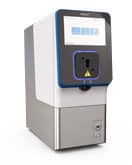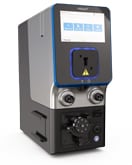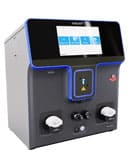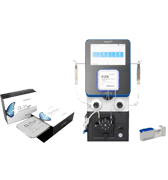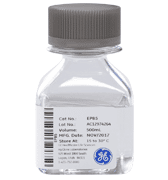Application Note
Hematopoietic Stem Cell Electroporation for HDR-Mediated Correction of an X-Linked Blood Disorder
Background
Wiskott-Aldrich Syndrome (WAS) is an X-linked recessive primary immunodeficiency affecting between 1 in 50,000 to 1 in 250,000 live births worldwide. Mutations in the WAS gene cause abnormal immune system function, thrombocytopenia, and an increased incidence of autoimmune malignancies. WAS pathophysiology is linked to impaired activity of the WAS protein (WASp), expressed in hematopoietic stem and progenitor cells (HSPC) and their lineages. Gene therapy clinical trials have used a lentiviral vector (LV) with a fragment of the endogenous WAS promoter in HSPCs to upregulate WASp expression and restore immune function in most patients. Unfortunately, viral vector treatment brings a potential risk of genotoxicity, a significant concern for WAS patients already predisposed to lymphoid malignancy. Furthermore, viral vectors do not restore physiological WAS expression in all hematological cells. Homology Directed Repair (HDR)-mediated transgene knockin enables more precise control over site integration and copy number relative to viral vector delivery. MaxCyte® electroporation (EP) enables a nonlentiviral-based therapy to correct all known WAS disease-causing mutations.
Rationale
This work shows the first therapeutically relevant restoration of WASp expression in healthy and patient-derived HSPCs and differentiated cells. The MaxCyte electroporation facilitates the delivery of CRISPR-Cas9 ribonucleoproteins (RNP) followed by transduction with the Adeno-Associated Virus 6 (AAV6) donor vector for efficient, scalable and safe, functional correction of the WAS defect. Importantly, MaxCyte Flow Electroporation® technology empowers the clinical translation of this innovative approach to a broad range of other HSPC blood disorders.

Technical Approach
This study demonstrates that precise CRISPR-Cas9 genome editing of WAS mutations is possible in up to 60% of HSPCs without impairing cell viability or differentiation potential. Gene correction is achieved by site-specific knockin of a codon-optimized cDNA at the WAS locus. When RNP electroporation was followed by transduction with the AAV6 donor vector, up to 61% of HSPCs showed positive targeted integration of therapeutic WAS cDNA in patientderived HSPCs, with no significant decrease in cell viability compared to mock-targeted HSPCs. The observed rates of targeted integration met or exceeded the standards set at small scale during optimization studies. Using the MaxCyte GTxTM instrument, the optimized gene editing protocol was seamlessly scaled up for clinical use from 1.25 to 20 million cells.
Conclusions
MaxCyte® electroporation of gene editing tools offers several advantages over past treatment strategies for WAS patients. HDRmediated transgene integration provides controlled genetic engineering avoiding the genotoxicity of semi-random lentiviral integration. Superior gene correction and higher WASp expression were detected in several hematopoietic and mature cell lineages. The reconstitution of WASp expression demonstrated here could reduce the risks of autoimmunity and persistent inflammatory complications in addition to ameliorating symptoms such as thrombocytopenia. The potential to engineer millions of ex vivo corrected HSPCs in a single process may unlock a universal treatment option for WAS patients.
References
- Rai, R., Romito, M., Rivers, E. et al. Targeted gene correction of human hematopoietic stem cells for the treatment of Wiskott - Aldrich Syndrome. Nat Commun. 11, 4034 (2020). https://doi.org/10.1038/s41467-020-17626-2
- Worth, A. J. & Thrasher, A. J. Current and emerging treatment options for Wiskott-Aldrich syndrome. Expert Rev. Clin. Immunol. 11, 1015–1032 (2015).
- Aiuti, A. et al. Lentiviral hematopoietic stem cell gene therapy in patients with Wiskott-Aldrich syndrome. Science. 341, 1233151 (2013).
- Braun, C. J. et al. Gene therapy for Wiskott-Aldrich syndrome–long-term efficacy and genotoxicity. Sci. Transl. Med. 6, 227ra233 (2014).
- Notarangelo, L. D., Miao, C. H. & Ochs, H. D. Wiskott-Aldrich syndrome. Curr. Opin. Hematol. 15, 30 –36, https://doi.org/10.1097/MOH.0b013e3282f30448 (2008).
This content was adapted from Rajeev Rai et al. Nat Commun. (2020) under the Creative Commons license Attribution 4.0 International (CC BY 4.0)
